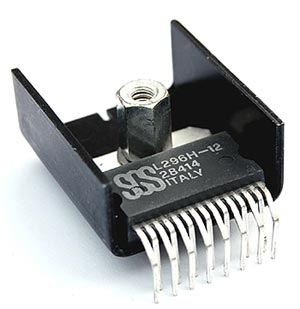In a project, the major focus is on active components, circuit design and software, in that order. However, what we tend to overlook is the humble cable and connectors that link all the components together. Nonetheless, along with the more glamorous components, the humble cable assemblies also define the success and reliability of your project.
Active devices and test equipment, being very tangible, always seem to command greater respect compared to the attention bestowed on the almost invisible cable and connector assemblies. This is true in both the prototyping and production cycles. However, this may prove unwise in the long run. Although wireless connectivity is catching up fast, in reality, hard-wired signal interconnects are still irreplaceable and indispensable parts of nearly all systems.
Once design engineers work on the gigahertz and higher ranges in their projects, it gets more challenging for them as cable assemblies play a more active role, both practically and figuratively. The importance of cables and connectors can be seen in RF/microwave-centric web sites and publications that devote more than one-third of their ads and content to the subject. In the high-frequency world, phase matching between two nominally identical assemblies is very often critical. This arena talks about second- and third-order parameters and the temperature coefficient of the cable’s specification gains importance. High-frequency designers treat cable assemblies with respect. For them, the assemblies are energy waveguides that are carefully engineered and modeled with precise dimensions, tested and fabricated.
Just as there are many cases of counterfeit components, mostly ICs and sometimes passive, Cabling and Installer have reported fake cable assemblies as well. In fact, this was one of their top 10 articles in 2014. Fake cable assemblies do not fully meet the operating specifications. They may somehow work, but fall short at higher data rates, or they cannot provide the specified power when used for PoE.
Not only the electrical performance, fake cable assemblies compromise safety as well. In most installations, a cable’s insulation is very important factor, as it must be fire-rated so as not to support combustion. This is usually not noticed unless a fire breaks out. Some fake assemblies even substitute the necessary copper wire with a brittle aluminum core and copper cladding.
It is very easy to make fake cables, stamping them with almost any rating required. Very few people test and verify the cable performance when faced with falling data rates and rising BERs. In most cases, we remain content with the Cat5/UL rating stamped on the cable, taking them as given. This is a concern that is bothering not the high-frequency instrument manufacturers alone, but also the audio industry, the aircraft industry and electrical distribution companies. Who can say the OFHC or Oxygen Free, High Conductivity audio cable is not actually a plain copper cable slapped with an OFHC label?
With the world now reaching out to 100GHz and beyond, cables are getting thinner, tinier, with hair-thin wires, and corresponding match-head sized connectors. At such high frequencies, every bend radius, routing guide stress, torque and abrasion from sharp edges becomes important and critical.


